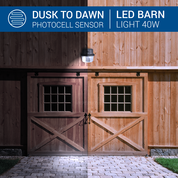Why Contractors Should Choose LED Lighting for Commercial and Residential Properties, Inside and Out

For building or lighting contractors, whether they’re planning or implementing the lighting infrastructure of a commercial or residential project, there are some options that are increasingly standing out as superior. A good example of that is LED lighting. It’s hard to find a single category in which LED technology doesn’t… outshine the other lighting technologies. It’s not often that an innovation is good for business, good for the contractor and for the client, good for the pocketbook, and good for the environment, but LED lighting is all of those things. The following covers just a few of the reasons contractors should choose LED lighting for commercial and residential properties, inside and out. Indoor LED Lighting Fluorescent lights were more energy efficient, lasted longer, produced less heat, and were relatively inexpensive back in the day. Now, exactly the same can be said for the advantages of LED lighting over fluorescents. Plus, LEDs don’t need time to ...




